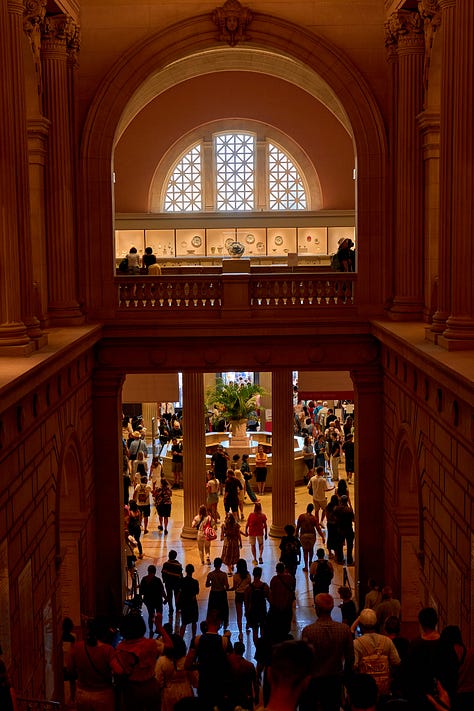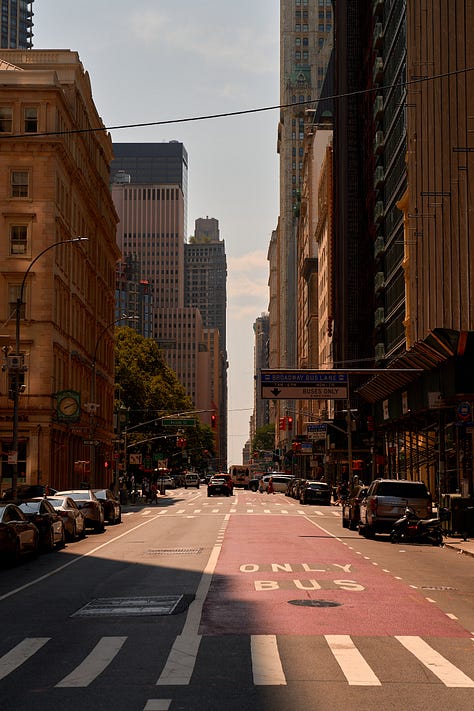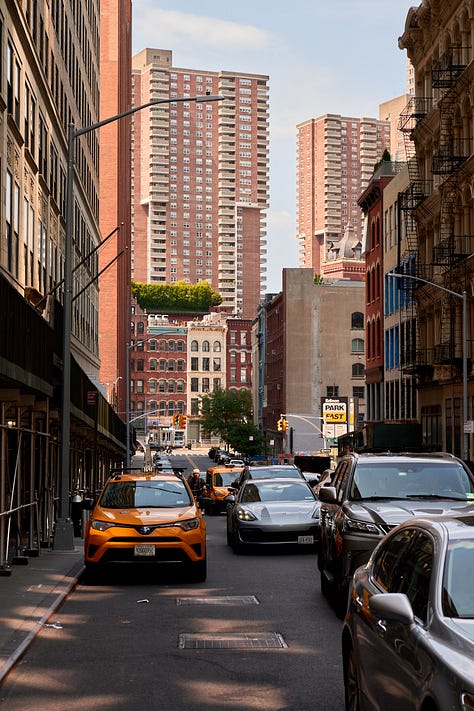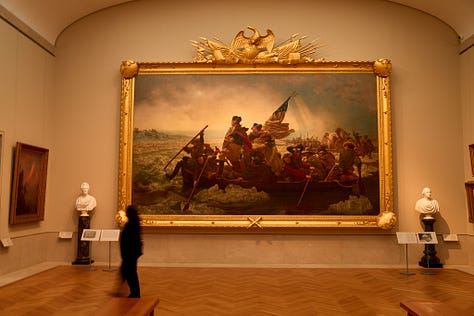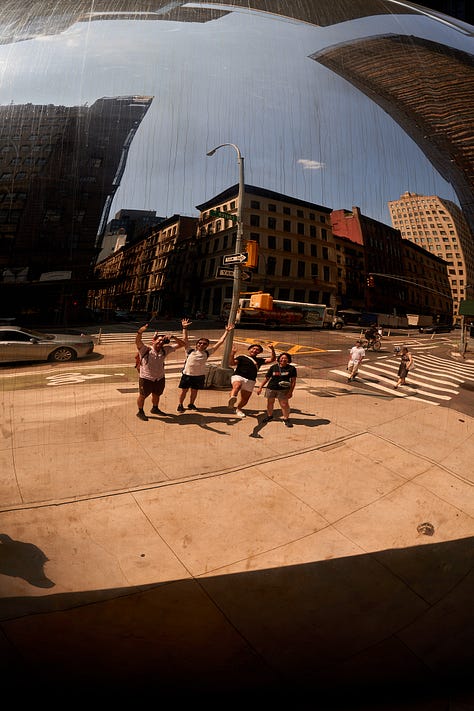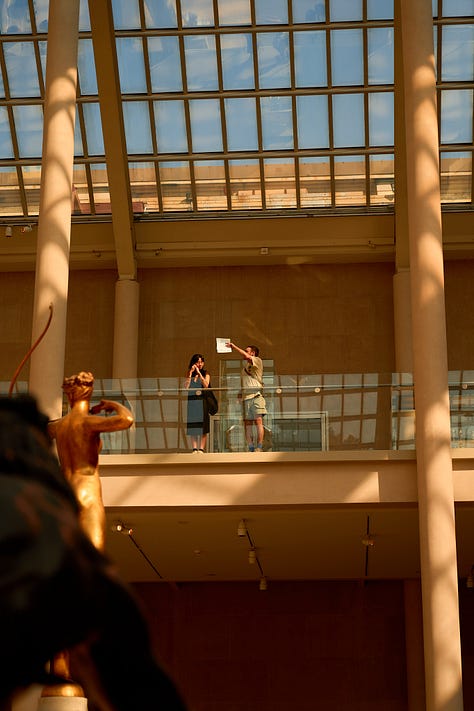My eyes widened and my ears pricked as I stepped off the serene tourist-filled airport train and into the churning sea of humanity that is New York City. During peak hour, Penn Station and the surrounding streets were packed tighter than sardines, bodies pressed against each other in a desperate attempt to find space. Buskers played at the major terminals, with their freeform music adding another frantic energy of the city. As I tried to navigate the crowd, I felt myself being jostled and shoved, a reminder of the relentless pace of life in New York. The sensory overload was overwhelming, leaving me unexpectedly breathless and disoriented. Yet it was oddly magnetised by the electric energy and vibrant atmosphere of the city.
After 2 weeks of exploring the city, I had run my body battery to the ground. When I finally arrived in Boston this week, I fell into a deep 12-hour slumber, my body recovering from the whirlwind of activity that had characterised my time in New York.
Central Park: A Refuge in the City
Amidst the chaos of the city, Central Park stands as a serene oasis. It's like stepping into a parallel universe, a world where squirrels scamper through lush greenery, dogs wrestle playfully, and people sit peacefully, lost in the pages of a book. The park's tranquil atmosphere offers a much-needed respite from the frenetic pace of city life. I recently travelled to Monaco which featured in my last blog (#29. A Nautical Nationality), and it was fascinating to know that Central Park is a significantly larger space. Monaco coming in at 2.02 square kilometers (499 acres), and Central Park at 3.41 square kilometers (843 acres).
It comes at surprise that Central Park was designated a National Historic Landmark in 1966 and attracts over 37 million visitors annually. This massive influx of people underscores the park's importance as a public space and a vital component of the city's identity.
Figure 1 - Original map of Central Park in 1875 (1)
A Socially Engineered Oasis?
While Central Park provides a welcome escape, I couldn't help but wonder if it had been intentionally designed to reinforce the city's capitalist obsessions. Many people visit the park during their lunch breaks, seeking a brief respite before returning to their demanding jobs. The park seems to function as a refueling station, allowing workers to recharge and return to their tasks with renewed vigor. In Manhattan, where 11–12-hour workdays are the norm, Central Park offers a temporary escape from the grind and perhaps an ability to sustain high performance and increased efficiency.
Furthermore, nearby park side offices with views of nature can improve productivity and wellbeing, as can having plants in the workplace (2,3,4). Some companies in the US are also building outdoor meeting rooms and pop-up workspaces. Amazon took this to another level and built ‘The Spheres’ in Seattle presumably to test and yield the same benefits (5).
All this evidence suggests that Central Park's role as a place of relaxation and rejuvenation is not only beneficial for individuals but also for the city's overall economic health.
The Hidden Danger: Sunburn
Despite its peaceful ambiance, Central Park isn't without its hazards. While exploring the park, I learned from locals that certain areas are at a higher risk of sunburn than others. The Great Lawn, in particular, lacks adequate tree coverage, leaving visitors exposed to the harsh rays of the sun. If you look closely at Figure 1, you’ll notice that the space was originally a reservoir which helped Manhattan manage flooding events. In open spaces like these, the surrounding skyscrapers reflect sunlight from all angles making the region a UV hotspot, therefore increasing the chances of sunburn, as seen in Figure 2.
Figure 2 – Increased UV ray focal point in exposed areas of Central Park
New York City Department of Health and Mental Hygiene found that many New Yorkers are not taking adequate precautions to protect themselves from the sun. This is particularly concerning given the city's high population density and the prevalence of outdoor activities, most of which take place in the public parks.
Although I heard about this phenomenon from a local, it surprised me that there wasn't more information available about the potential higher risk of sunburn in Central Park. Perhaps the focus has been on promoting the park's recreational benefits rather than highlighting its potential health risks. But then again, who has the higher willingness to pay for marketing rates? Public health institutes or Big Pharma companies?
Conclusion
New York City is a city of contrasts, a place where chaos and tranquility coexist. Central Park offers a much-needed escape from the hustle and bustle of city life, but it's important to be aware of the hidden dangers, such as the risk of sunburn. As visitors and residents alike enjoy the park's amenities, it's essential to take precautions to protect themselves from the sun's harmful rays. Perhaps in the future, it’ll become mainstream knowledge rather than word of mouth.
Additional Photos from my Travels:

